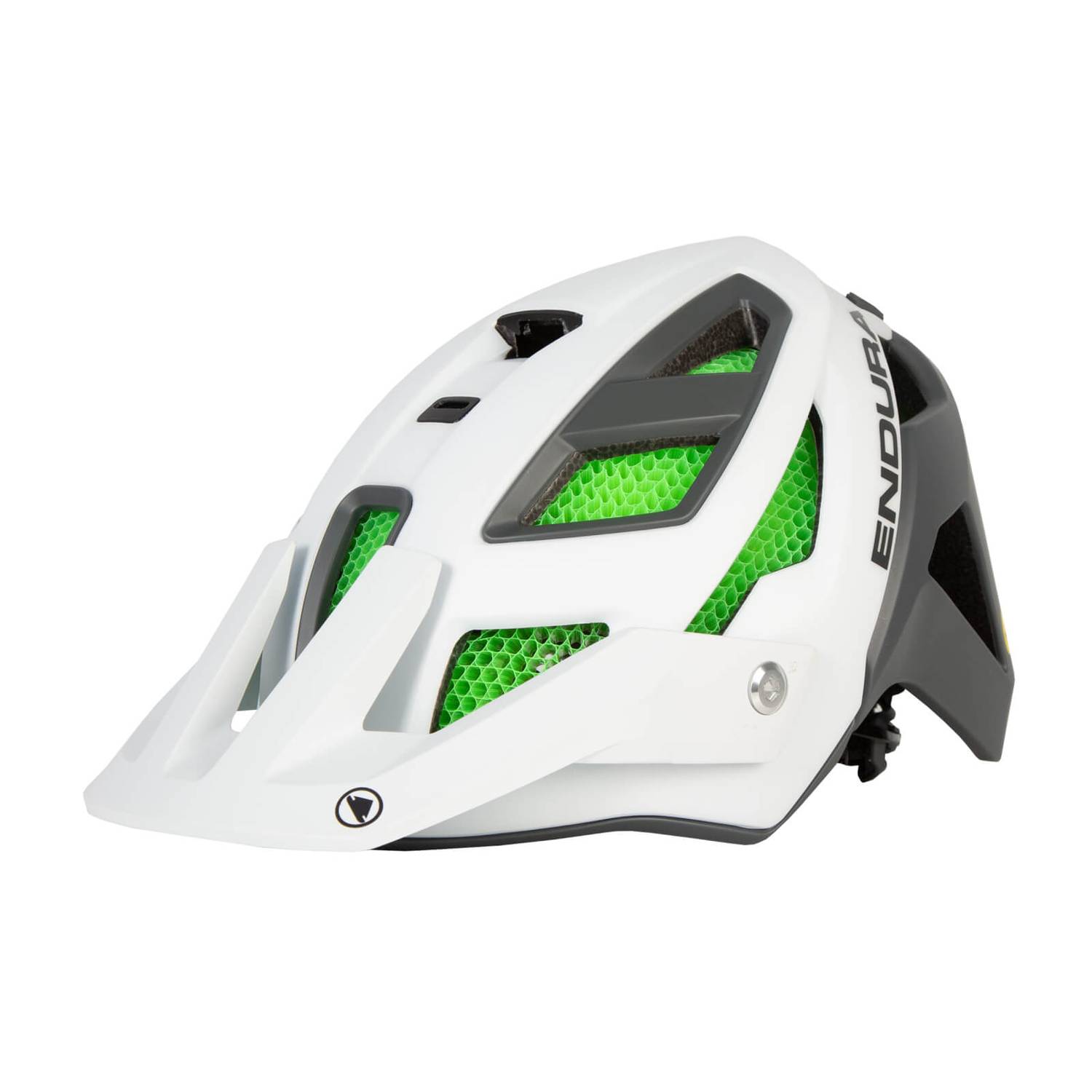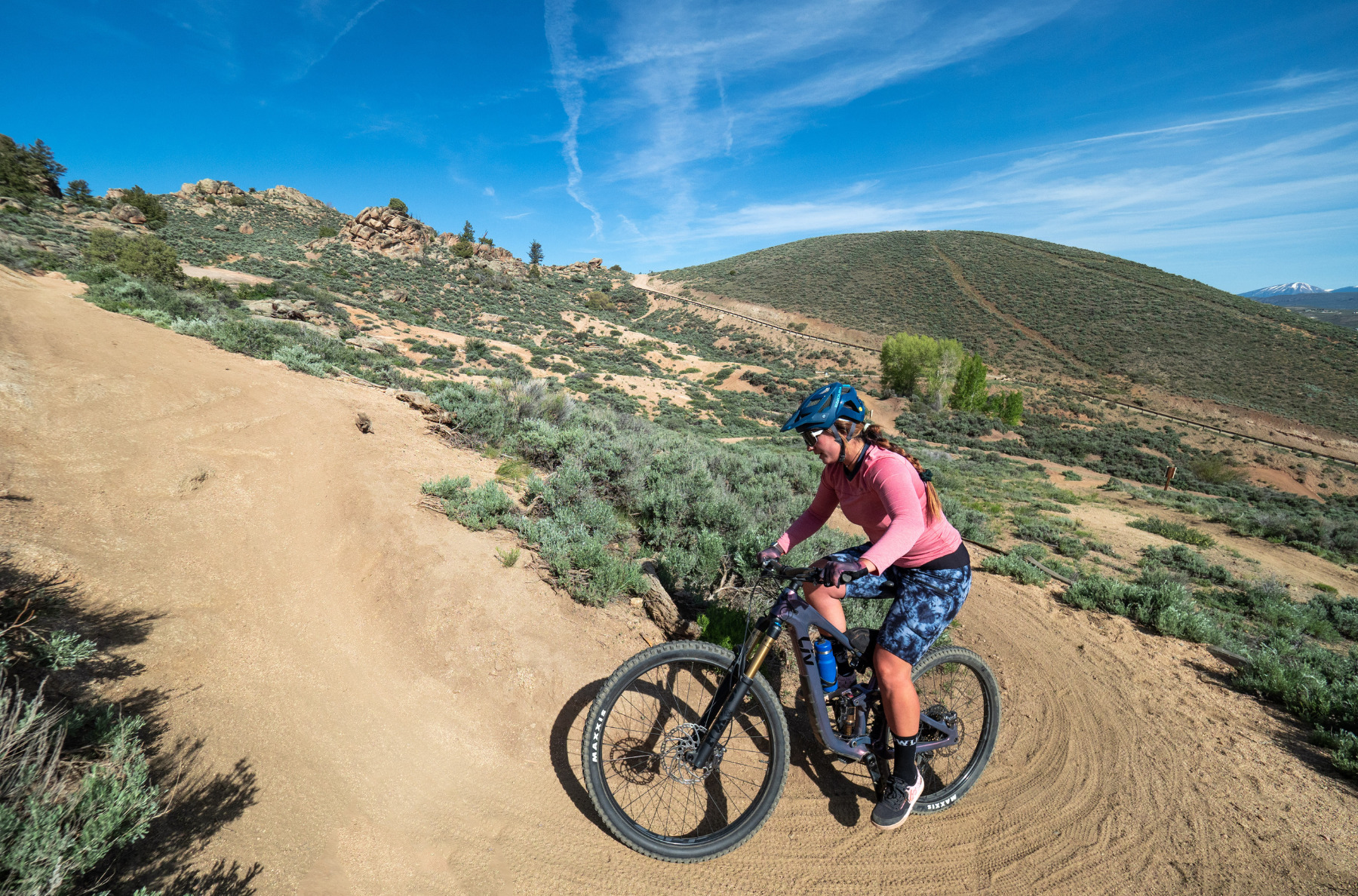Endura MT500 MIPS Helmet
Test Locations: Gunnison & San Juan Mountains, Colorado
Duration of Test: 3 months
Size Tested: M/L
Blister’s Measured Weight: 415 g
MSRP: $239.99
- Lightweight in-mould construction
- Full Koroyd core provides increased energy absorption
MIPS® Brain Protection System reducing multi-directional impacts - Removable, adjustable visor offering a wide range of movement
- Large vents including top ‘air intake’ zone provide increased airflow, with fast wicking, quick dry, soft touch, removable padding
- One-handed micro adjust fit system, integrated in to MIPS layer for super secure, comfortable fit and with range of adjustment
- Goggle friendly design with rear strap gripper and front vents act as sunglasses “dock”
- Clip on accessory mount, accessory clip and light mount included
- Covered by Endura’s Crash Replacement Policy and Endura Product Guarantee
- Certified to CPSC and CE EN1078:2012 + A1:2012 Standards

Intro
The MT500 has been a long-term staple in Endura’s helmet lineup, but they recently gave it a substantial redesign, including adding a MIPS liner and revising the arrangement of the Koroyd core that forms much of the internal structure of the helmet.
The MT500 serves as Endura’s highest-end half-shell helmet, bookended in their collection by the MT500 full-face and less-expensive Singletrack half-shell, all three of which received updates this year. After spending all of the spring and most of the summer in the latest version of the MT500 MIPS helmet, we are ready to share our thoughts.
Design & Features
The MT500 MIPS looks and functions like an all-round Trail helmet; the coverage in the back is a bit broader than several other Trail helmets, such as the Scott Argo Plus, but the MT500 also maintains a pretty lightweight construction. Aside from the fairly minimal in-molded foam “skeleton,” the main structure of the helmet is made from Koroyd, a material comprised of welded plastic tubes that are designed to help absorb shock upon impact while maintaining breathability. That carries over from the prior-generation MT500 helmet, but as implemented in the new MT500 MIPS, the tubes are larger in diameter and the Koroyd material doesn’t extend as far down the back of the helmet, making the rear vents more open on the new version.
If you’re not familiar with what the “MIPS” in this helmet’s name alludes to, it stands for Multi-directional Impact Protection System and, in this implementation, is essentially a thin plastic liner that sits between the padding on the inside of the helmet and the main shell. The idea is to allow the shell of the helmet to rotate slightly on the rider’s head, in the event of a crash where the helmet hits the ground, to reduce the rotational loads that get transmitted to the head. It’s become fairly commonplace in high-end bike and ski helmets, and it’s probably worth investing in if you’re looking to upgrade your current helmet.

Fit
The MT500 is offered in three sizes, S-M, M-L, and L-XL, which reportedly cover head circumferences ranging from 20” / 51 cm up to 25” / 63 cm. I have a head circumference of 22.6” / 57.5 cm and opted for the M/L (55-59 cm), which has fit great. I can use the dial at the back to cinch down the helmet evenly around my head, and I pretty much fall right in the middle of the range on the adjustment dial. That dial is easy to use and can be adjusted with one hand, which is convenient when on the bike.

Shape-wise, the MT500 feels slightly more on the oval side, which works well for me (my head is less round and more oval). Even after several hours or nearly an entire day spent in the helmet, the shape and fit of the MT500 trail helmet have worked well for me. I started wearing the MT500 in early spring when temperatures in the Gunnison Valley were still in the 20-40°F (-7 to 4°C) range, and I was grateful that the MT500 provided enough room to fit a thin helmet liner beneath to help keep my ears warm.
The only fit-related issue I have noticed with the MT500 is the shape of the plastic straps that come down around my ears. While I have adjusted the length of the straps quite a bit, I still sometimes find the plastic divider digging into my ears. It’s usually not a big deal, but on bikepacking trips or really long days on the bike, it does contact my ears enough to cause a bit of discomfort.
Overall, I’d say the MT500 fits true to size and doesn’t have any particularly polarizing aspects in terms of fit. As always, your best bet is to try on a helmet before buying, whenever possible, since everyone’s head is different.
On The Trail
I have spent quite a bit of trail time in the MT500 MIPS helmet this season and have been impressed by the overall comfort and how all the features transfer to on-trail use. What stands out the most to me is that it’s pretty lightweight and extremely breathable, making me less aware that I’m even wearing it, which is a good thing. Even on rough trails where I found myself hike-a-biking more than actually pedaling, I was comfortable enough to leave this helmet on for sun protection, which I can’t say about other helmets I have spent time in.
Between its fairly broad coverage, reported energy absorption of Koroyd, and the MIPS system, the MT500 offers a pretty robust set of protection-oriented features, but it doesn’t feel bulky or like it’s overkill for shorter rides / really hot days. Because of this, it’s been very adaptable and practical for a wide range of trail applications, while still being pretty breathable and not exhibiting any notable shifting around or noisiness while on my head.

The MT500’s adjustable visor provides plenty of sun coverage and it stays in place throughout the day. While I’d classify it as a pretty large visor, it doesn’t obstruct my field of view and it’s easy enough to lift high enough to get out of the way entirely.
Overall, all of my time in the MT500 over the last several months had me thinking less about my helmet, which I think is a testament to its comfort and useful features that make it less obvious on my head rather than more.
Bottom Line
The price point of the new Endura MT500 MIPS helmet is definitely on the higher end of things for a half-shell, but it makes a compelling case for that initial investment by being extremely comfortable, breathable, and adjustable, while also offering more coverage and added safety features than many less-expensive models. If you split your time between a wide variety of trails and climates, the MT500 MIPS is definitely worth considering, especially if you want above-average coverage without feeling suffocated on hot, long days aboard the bike.
